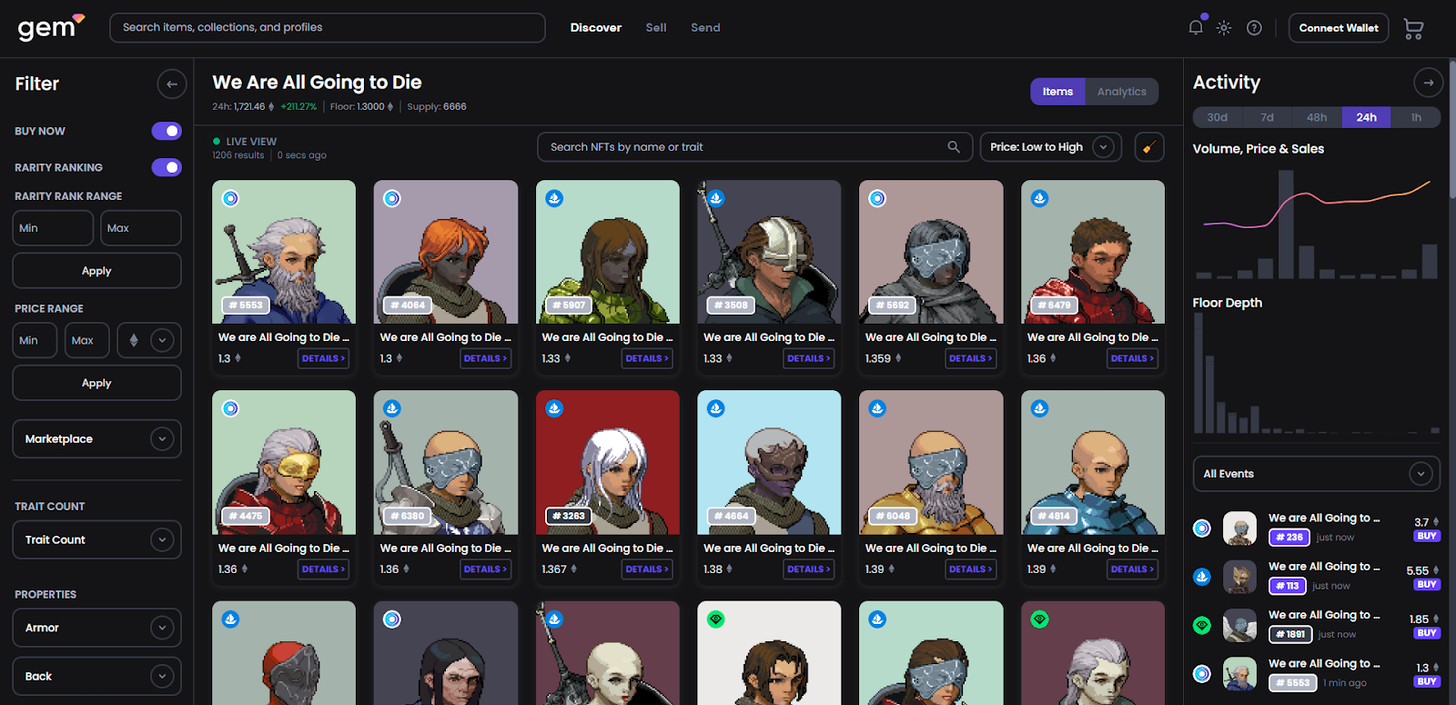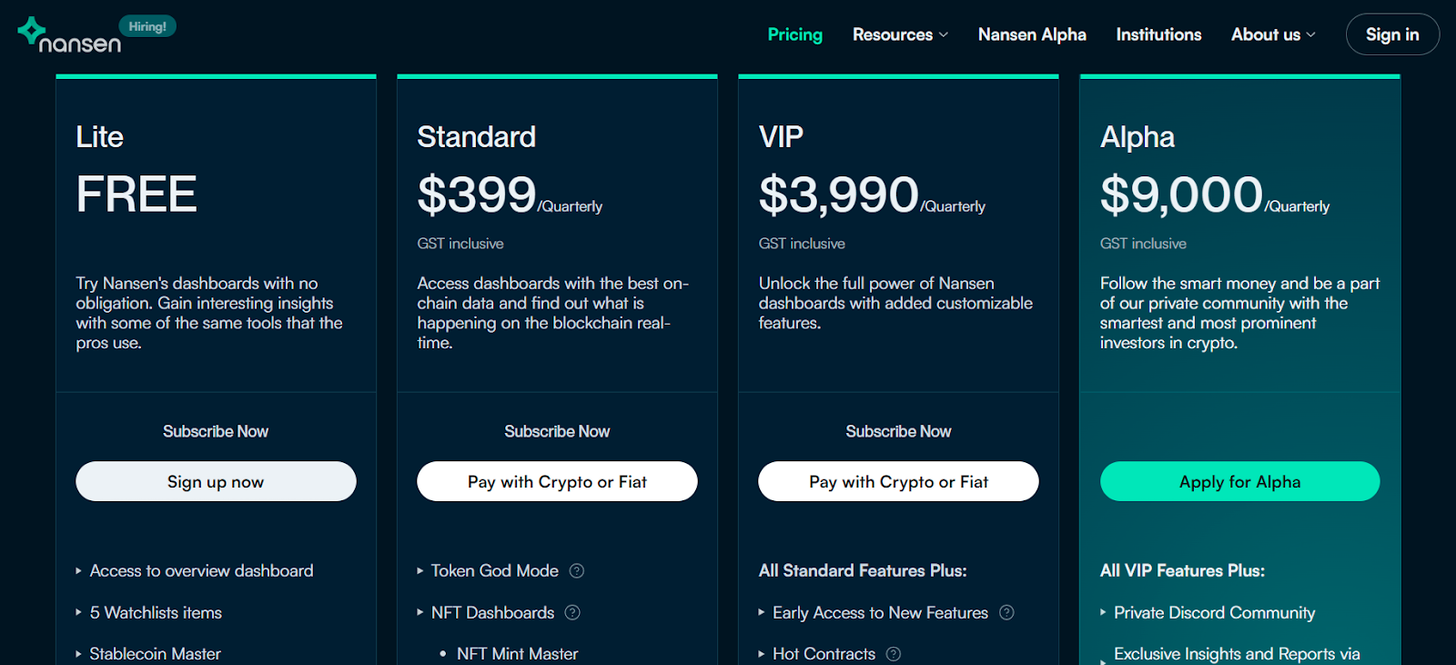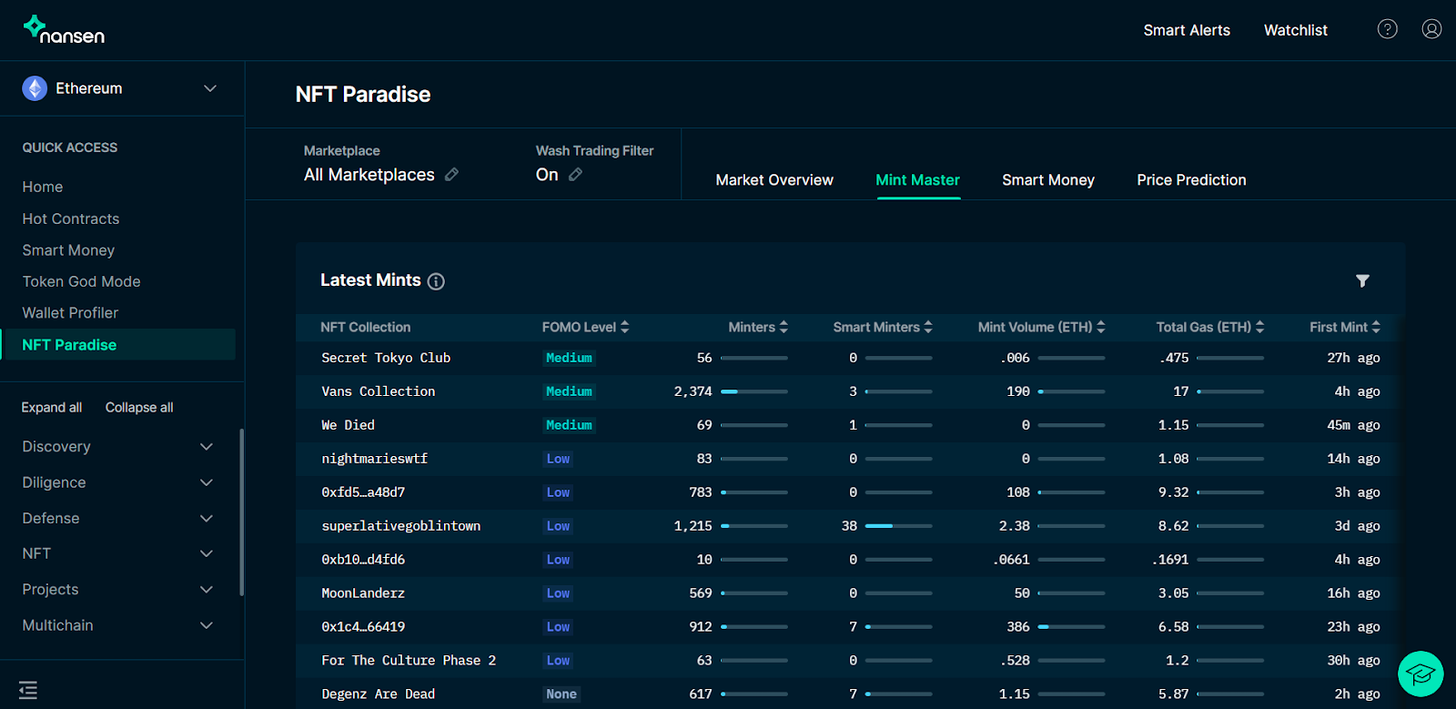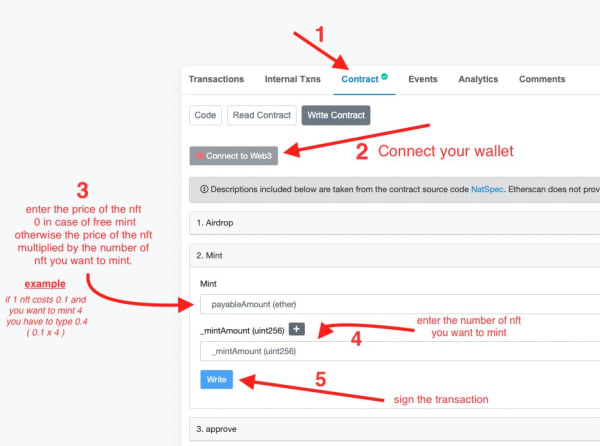Metaversal is a Bankless newsletter for weekly level-ups on NFTs, virtual worlds, & collectibles
Dear Bankless Nation,
After the stunning success of the goblintown.wtf collection’s launch last month, “free-to-mint” NFT drops have become all the rage.
Like its name suggests, this drop style involves projects releasing NFTs free of charge besides the ETH gas fee required for minting.
The creators of these projects eschew primary sale revenues in favor of secondary sale royalties, i.e. earning a cut every time one of their NFTs trades hands on OpenSea, LooksRare, etc.
Over the weekend, the new We Are All Going to Die (WAGDIE) collection served as our latest reminder that free-to-mint projects can quickly go from free to very valuable in this current market meta. Here are some tips on things to look out for accordingly.
-WMP
🙏 Sponsor: Rarible – discover & trade NFTs across multiple blockchains and communities✨
How to approach free mints

Learn your way around an NFT smart contract
The WAGDIE collection didn’t launch with a website, so there was no front-end minting interface. Minters had to go directly to the project’s smart contract on Ethereum blockchain explorer Etherscan and mint from there.
Alas, knowing how to mint directly from a smart contract is a great skill to have right now, but every NFT smart contract varies in jargon and so forth. The tweet listed above is a great general example, though: once you’re on a project’s Etherscan page, you’d start by pressing the “Contract” tab and then the “Write to Contract” button. Then you’d input the mint price (“0”) and the mint amount and press “Write.”
However, not all contracts will be so straightforward. If you get confused or get quoted with some insanely high gas fee by MetaMask, back out to avoid error and consider trying your chances on the secondary marketplace, e.g. OpenSea.
Setup a dedicated mint wallet

1. There’s a lot of “free” mints, championing CC0, with no website, discord or marketing etc. It’s the new meta, but the important thing to remember is pretty much all of these have anon founders (anon to the point of not even having personal Twitter accounts).
You should approach every free-to-mint NFT project defensively. Don’t use your main wallet with all your primary DeFi and NFT positions to mint from these upstart projects, as these collections typically launch with unverified source codes. You’re trusting these projects to not be nefarious when you mint from them accordingly, so it’s best to use a siloed wallet that has limited funds and so forth. That way if you do ever end up interacting with a malicious contract, it’ll be from a wallet that you’ve set aside for the express purpose of potentially being attacked, and the damage will be mitigated accordingly.
Conversely, if you ever do mint free-to-mint projects and their floor ends up surging, you don’t want to keep your NFTs in your mint wallet for long just in case it does get attacked eventually. Roll your wins back to safer pastures like your main hardware wallets, etc.
Know where to look

Nansen is an crypto data analytics site that offers amazing NFT resources. One of my favorite tools therein is the NFT Mint Master resource, which shows which projects are minting out on an ongoing basis.
To access the Mint Master dashboard, you have to at least have a $399 quarterly subscription membership to Nansen. That’s not cheap, but at the same time the dashboard could lead you to a free mint that ends up covering your subscription costs and then some.
For example, I found WAGDIE via Mint Master by noticing on Friday that nearly 40 “Smart Minters” had participated in the project’s mint. I was then able to accumulate a few before the project exploded, and now the floor price at the time of this post’s writing is 1.5 ETH each, so my subscription’s been covered multiple times over at this point. Of course, it’s not that every mint will be a win, but Nansen makes it simpler to surface signals in real time.

Prepare for more

Free mint, no honoraries nor team allo, restricted # mints per addy and trading royalties are probably the best compromise between “fair” NFT launch while rewarding founders if collection is a success.
The free-to-mint meta is here to stay. It has its pros and cons, to be sure. On the one hand, these stealth launched free mints can be very prone to bot mints. On the other hand, they offer a very easy entry point to those people who are able to find these projects early on. Altogether, it seems these free mints will be dominating the space for the foreseeable future, so strap in.
Action steps
-
👨🎓️ Study how to mint directly from Etherscan
-
👛 Setup a throwaway mint wallet
-
🕵 Check out Nansen
Author Bio
William M. Peaster is a professional writer and creator of Metaversal—a Bankless newsletter focused on the emergence of NFTs in the cryptoeconomy. He’s also recently been contributing content to Bankless, JPG, and beyond!
Subscribe to Bankless. $22 per mo. Includes archive access, Inner Circle & Badge.
🙏Thanks to our sponsor
RARIBLE
Rarible.com is a top multichain NFT marketplace underpinned by Rarible Protocol, the open source, community-governed NFT API that simplifies building community marketplaces and any other NFT projects and integrations.
💸 Connect up to 20 Ethereum, Polygon, Tezos, Flow wallets to your profile
🙋♀️ Place a floor bid on BAYC, BossBeauties, mfers, and other NFT collections
📲 Monitor and manage your NFT portfolio in Rarible mobile app (iOS, Android)
🔗 Start building on Rarible Protocol: no API key, no rate limit, your own node option
Not financial or tax advice. This newsletter is strictly educational and is not investment advice or a solicitation to buy or sell any assets or to make any financial decisions. This newsletter is not tax advice. Talk to your accountant. Do your own research.
Disclosure. From time-to-time I may add links in this newsletter to products I use. I may receive commission if you make a purchase through one of these links. Additionally, the Bankless writers hold crypto assets. See our investment disclosures here.



